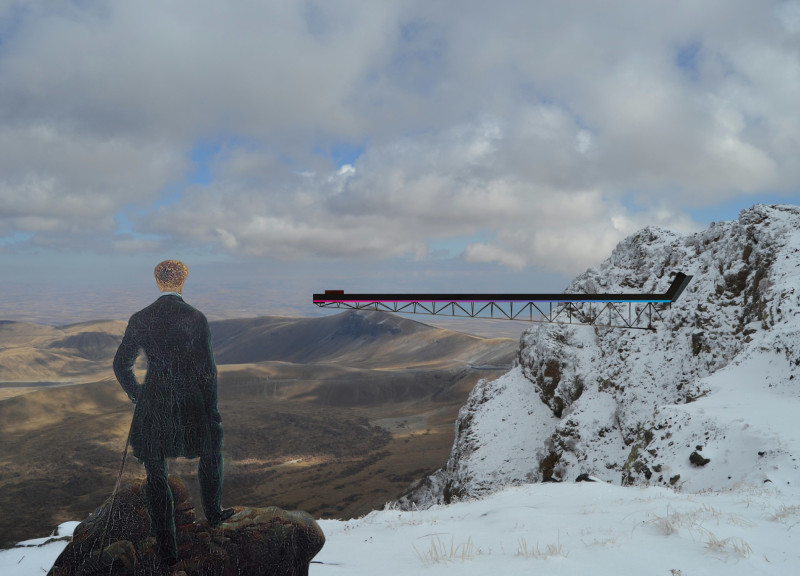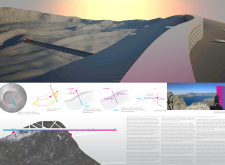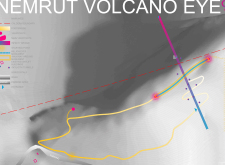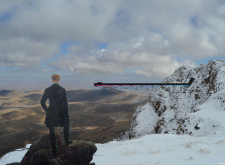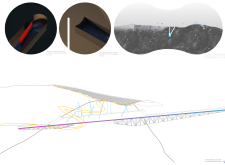5 key facts about this project
The design for the Caldera Hillside Nemrut Volcano Caldera is set within a striking landscape that invites connection between people and nature. The project focuses on enhancing the visitor experience by providing multiple viewpoints that allow for reflection on the volcanic environment. Its overall concept promotes accessibility, enabling individuals to fully engage with the unique geographical features of the site.
Infinite Bridge
A key feature of the design is the Infinite Bridge, which aligns directly with the geometric center of the volcano. This structure acts as a vital circulation path, guiding visitors to important viewpoints and helping them connect with both the surrounding city and the caldera itself. The bridge reflects an emphasis on balance and symmetry, establishing a sense of harmony amid a changing landscape.
Viewpoints and Perspective
Throughout the design, viewers will find strategically placed viewpoints that highlight the importance of perspective in understanding the volcanic landscape. Each viewpoint invites visitors to pause and observe, encouraging a deeper appreciation of the natural surroundings. The pathways are thoughtfully arranged to follow the contours of the terrain, providing gentle navigation for users as they explore and enjoy the various scenic options.
Engagement with Nature
The design also fosters a sense of observation and interaction with nature. This is captured through the concept of the Billion Eyes Monument, which signifies the interplay between human perspectives and natural observation. The pathways are designed with a serpentine shape, further enhancing the experience as visitors move through the space and discover new angles and insights from different locations.
Materiality and Aesthetics
The project hints at an openness in materiality, although specific materials are not extensively detailed. This focus on transparency promotes a connection with the landscape, allowing the built environment to blend with its natural setting. A careful selection of warm colors reflects the volcanic character, while cooler tones relate to the nearby urban area. This gradient enhances the narrative of the relationship between nature and human habitation.
Rest areas along the pathways provide places for visitors to pause and reflect, deepening their connection to the landscape. This thoughtful integration creates a shared space that resonates with both the natural and cultural elements of the region.


